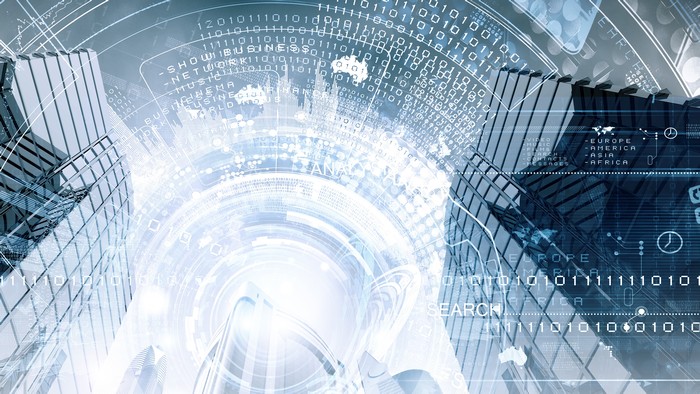The 2019 Built Environment

The built environment has been changing dramatically over the past 5 years. Technology shifts along with changing value propositions are making an impact on how we operate and manage our smart buildings. Our dialogue is no longer about the potential – rather it is about the reality of economics, operational value and business outcomes. The business of smart, connected commercial buildings and facilities has moved beyond the unknown and into the real and relevant.
The pace at which technology and innovation has impacted the commercial buildings industry over the past several years has been unprecedented. The proliferation of more powerful connected devices, IoT, the increase in the use of sensors, the ability to capture data from different sources, the increased use of more analytics, have created a rise in the volume, velocity, and adoption of these systems. It has also produced a multitude of new choices. Our challenge is not technology – it is here, and it is proven – but, rather, it is the willingness and preparation to take advantage of it.
We are being driven by what I refer to as the " 4Ds": digital transformation, data, dialogue, and disruption. In fact, the 4Ds are being driven at NASCAR speeds and are leading the way in redefining how we operate, manage and use commercial space in ways we never imagined. For example, Digital Transformation is becoming more immersive, and we are investing a lot into the digital experience; data is being treated like itís the most valuable asset on your balance sheet (and it should be); the dialogue is changing and conversation about buildings and facilities has changed and when it comes to disruption, it is not the who anymore, but rather it is the what that is going to disrupt you.
I believe there are some definite trends we should be thinking about no matter what role you play in the built environment.
The Empowered Edge
Connectivity, computing, and analytics are increasingly residing at the equipment and device sources. This enables data to be generated faster, more efficiently and more reliably than ever before. The ongoing evolution of micro-processing technology has meant that sufficient computing power to perform the heavy lifting of data acquisition, normalizing and analysis can now be performed directly onboard the devices themselves.
This evolution is happening because of the need to streamline the volume and types of data, reduce latency and manage bandwidth. Furthermore, it is about reducing the amount of data sent to the Cloud, reducing complexity and improving system response time. In fact, some say that 40% of the available data will be collected and analyzed near or at the Edge.
Edge devices are smarter, more powerful, and offer higher levels of functionality with enhanced embedded systems software. The trend is toward connecting more and more devices directly together that provide analytics within each device.
Platforms
We are now in an environment driven by platforms Ė especially open platforms. Open software and hardware platforms are finally getting their just dues. As building operators see these platforms as a way to manage and operate their facilities, system integrators and OEMs are adding services and extending value. Platforms create value for users by facilitating connections and exchanges between people for services and information.
Data, Data, Data and Analytics
Building systems generate vast amounts of data. When combined with analytics, one can avoid potential problems, reduce costs, and increase performance. The use of data is no longer optional – it is mandatory.
Data and analytics are now irreplaceable assets in managing and operating our buildings and facilities. You can't have one without the other. It is not an either/or situation. The need for cost-effective, real-time data and analytics has never been greater. Attention has turned from big data to smart data and real-time accessibility. And when it comes to data, unless data is interoperable, one will not experience the full power and value it can deliver. The data produced by a device is now more valuable than the cost of the device.
Data Ownership and Privacy
Along with all the smart data and the number of data points now available, comes two topics that are generating lots of debate and discussion data ownership and privacy.
It is important to note that data which is generated and gathered by our building systems and sensors, can pass through a number of different layers making for good debates on who owns it. Is it the application provider that shares it, the facility service firm who collects it, or the building owner/operator who owns the building and the systems that created it? Does data possession equate to ownership?
And how about privacy, especially as we increase the use of occupant data and occupant tracking for space utilization and productivity. There are no clear-cut answers or guidelines here yet, but undoubtedly, are being discussed.
Applications
The multitude of available applications and their use continues to be integrated into building operating systems. Specifically, apps centering around the organization, management and visualization of data, real-time analytics, predictive maintenance, space utilization, and the occupant experience, are receiving top considerations. While we will see new applications evolve, we need to keep in mind: it is not about the hip and hype, but rather the real and relevant.
OT and IT
Convergence between OT and IT has been a goal of smart buildings since the marketís inception. While the discussion on centralization and decentralization rage on, we are closer than ever to having both.
5G
As 5G continues to move closer to availability, it is becoming a hot topic for building equipment and technology providers as well as building owners and tenants. Despite the high level of interest – offering greater than 1 Gbps speeds and low latency – there remains a number of questions revolving around: how we will connect and make use of this technology, and what will its impact on the built environment be?
Artificial Intelligence
When we discuss the built environment in 2019, one must mention Artificial Intelligence (AI). AI will remain the buzzword of the day. Many still are not quite sure what AI is and how it will be applied to use cases within the built space. As more and more devices become connected and capable of interoperating with each other, AIís language processing, image recognition, and neural network-driven decision making will help them to understand each other, and us.
Cybersecurity
After a wild couple of years, is it just me, or has the cybersecurity landscape been a bit quiet? At the very least, the publicity around cybersecurity has quieted down. Rest assured though; the same threats are still there. Many organizations are still not addressing the elephant in the room when it comes to building operations and are underprepared to respond to threats that are ever present and becoming more sophisticated every day. It remains a concern and should part of the conversation and addressed in any deployment.
Choice
2019 is the year of choice. While choice is not new, the influence of platforms, applications, the edge, the influx of data and the open flexibility of todayís technology, make decisions based on choice better than ever.
In conclusion, we have created connected built environments that bring people and information together in ways that are meaningful and deliver operational value and successful business outcomes. 2019 is the year we get smarter about smart technology, smart equipment and smart solutions!!
This Week’s Sponsor
About Lynxspring: Embracing open software and hardware platforms, Lynxspring develops, manufactures and distributes edge-to-enterprise solutions and IoT technology to create smart buildings, better energy management systems, equipment control and specialty machine-to-machine and IoT applications. Lynxspring technologies and solutions simplify connectivity, integration, interoperability, data access and normalization and analytics from the edge to the enterprise. The companyís solutions are deployed in billions of square feet of commercial settings in the United States and internationally.
Read Next
 5/15/2025
5/15/2025
Tech, Talent and Transformation: 2025 Digie Finalists Announced For 27 years, Realcomm has presented the Digie Awards to acknowledge companies, real estate projects, technologies, and individuals that have advanced the commercial real estate industry through the strategic use of technology, automation, and innovation.
 5/15/2025
5/15/2025
Empowering Space Management with Data-Driven Visualization For effective CRE space management, itís critical to centralize lease data, maximize rental square footage (RSF), improve energy efficiency and reconfigure spaces to meet changing needs.
 5/8/2025
5/8/2025
The AI-Powered Workplace Evolution: Redefining the Business Landscape In today's rapidly evolving business environment, the fusion of Artificial Intelligence (AI) and Workplace Management is revolutionizing the way organizations approach workspace optimization and operational efficiency.
 3/27/2025
3/27/2025
The Convergence of Edge Computing, Cloud, and AI in Building Automation and Smart Buildings In the built environment, we have seen the convergence of Operational Technology (OT) and Information Technology (IT), later expanding to include Workplace Technologies (WP).






%20(1)%20(1)%20(1).png)




